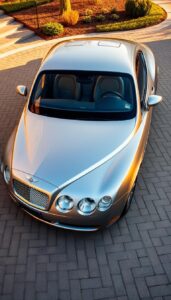On July 1, a shocking high-speed accident happened at NASA’s Kennedy Space Center. It involved the Hennessey Venom F5. This crash stunned car lovers everywhere. It showed how hard it is to push car engineering to its limits.
The Venom F5 was testing a new aerodynamic package when disaster struck. This event showed the tough work needed to make cars go super fast. It’s a lesson in the art of making cars perform at their best.
The accident brought a lot of attention to Hennessey Performance Engineering. People all over the world watched closely. They were amazed by the car’s speed and the engineering that went into it.
Key Takeaways
- Hennessey Venom F5 crashed during specialized NASA testing
- Incident occurred at Kennedy Space Center on July 1
- High-speed accident sparked intense technical investigation
- Aerodynamic package testing revealed critical engineering challenges
- Event highlighted extreme performance limits of hypercars
Breaking News: High-Speed Incident at NASA’s Kennedy Space Center
A dramatic crash happened at the Shuttle Landing Facility. It caught the eye of car fans everywhere. The Hennessey Venom F5, a top-of-the-line supercar, was involved in a test that tested its limits.
Moment-by-Moment Incident Timeline
The Venom F5 faced unexpected problems during a test. The driver was doing speed tests at Kennedy Space Center. When a major downforce issue came up, the car was going very fast.
- Location: NASA’s Shuttle Landing Facility
- Speed at incident: Approximately 250 mph
- Test objective: Aerodynamic performance validation
Initial Incident Response
Car fans quickly reacted to the news of the wreck. Emergency teams sprang into action fast. They showed great skill in handling the serious situation.
Safety and Survival
The driver amazingly escaped without major harm. This shows how far car safety has come. It also shows how important it is for cars to be safe at high speeds.
The Venom F5’s design proved its resilience under extraordinary circumstances.
Understanding the Hennessey Venom F5: A Technical Overview

The Hennessey Venom F5 is a true marvel in the world of hypercars. It’s a top-notch car that shows what speed and tech can do together. At crash sites, people love its design and how it performs.
The Venom F5 has a special engine that makes it stand out. Its twin-turbo V8 engine produces 1,817 horsepower. This makes it one of the most powerful cars ever made. Its safety rating shows it’s built with the latest tech.
- Engine: Twin-turbo V8
- Horsepower: 1,817 hp
- Production Limit: 24 units
- Price: $2.1 million
The car’s specs are truly amazing. Luxury car fans see it as the best in engineering. It’s made of carbon fiber and has a design that breaks new ground in speed.
| Specification | Details |
|---|---|
| Top Speed Target | 311 mph |
| Acceleration (0-60 mph) | Under 2.6 seconds |
| Chassis | Carbon Fiber Monocoque |
The Venom F5 is all about giving drivers an unmatched experience. With only 24 made, it’s a rare gem. It mixes power with advanced tech in a unique way.
The Test Drive Setup: Preparation and Goals
The Hennessey crash investigation started with a bold test drive at NASA’s Kennedy Space Center. The Shuttle Landing Facility was chosen for its unique setup. It’s perfect for testing the limits of hypercar safety and extreme performance.
Getting ready for a high-speed test needs careful planning and precision. The Hennessey team picked this special facility for its benefits in testing hypercar performance.
Shuttle Landing Facility Specifications
This facility has features that make it great for extreme car testing:
- 15,000-foot runway length
- Extremely smooth concrete surface
- Minimal environmental interference
- Advanced measurement infrastructure
Testing Parameters and Objectives
The main goals of the test were to check the Venom F5’s performance:
- Validate aerodynamic design
- Measure top-speed potential
- Assess hypercar safety features
- Collect comprehensive performance data
Safety Measures in Place
Strict safety rules were set to protect the driver and the hypercar during the test:
| Safety Component | Specific Measure |
|---|---|
| Driver Protection | Custom-fitted racing suit and helmet |
| Vehicle Safety | Carbon fiber monocoque chassis |
| Emergency Response | Medical team and rescue vehicles on standby |
| Communication | Real-time telemetry and radio contact |
These detailed preparations show Hennessey’s dedication to exploring car limits safely.
Hennessey Venom F5 Crash: Detailed Incident Analysis

The Hennessey Venom F5 crash at NASA’s Kennedy Space Center showed us a lot about supercars and speed. The hypercar lost control at about 250 mph, showing possible weaknesses in its design.
Several things led to the crash:
- Sudden downforce reduction at extreme speeds
- Potential aerodynamic instability
- Wind conditions at the test facility
- Performance limits of high-speed vehicle engineering
Experts in supercar crash testing looked into this, pointing out the big challenges in pushing cars to their limits. The car’s quick stop and loss of control showed how design, speed, and environment interact.
The team found a few key moments in the crash:
- Initial speed plateau at 250 mph
- Unexpected aerodynamic shift
- Rapid directional change
- Vehicle destabilization
This incident shows how close we are to success or disaster in car engineering.
The Experimental Aerodynamic Package
Hennessey’s engineering team took a bold step with the Venom F5’s new aerodynamic package. They aimed to break speed records and improve stability. This design is a game-changer in automotive engineering.
Testing the Venom F5 showed how crucial good aerodynamics are. Hennessey’s team worked hard to create a design that could hit over 300 mph.
Innovative Design Features
- Advanced carbon fiber body panels
- Precision-engineered active aerodynamic elements
- Computational fluid dynamics optimization
Performance Expectations
The new package aimed to solve several big challenges:
- Reduce drag at high speeds
- Boost downforce stability
- Improve control over the vehicle
| Aerodynamic Parameter | Target Performance |
|---|---|
| Drag Coefficient | 0.39 cd |
| Downforce at 250 mph | 800 kg |
| Stability Improvement | 15% over previous design |
The experimental aerodynamic setup is a daring move in hypercar engineering. It shows Hennessey’s dedication to innovation.
“Every breakthrough comes with risks, but innovation demands courage,” said a Hennessey engineering team member.
Speed and Performance Metrics During Testing
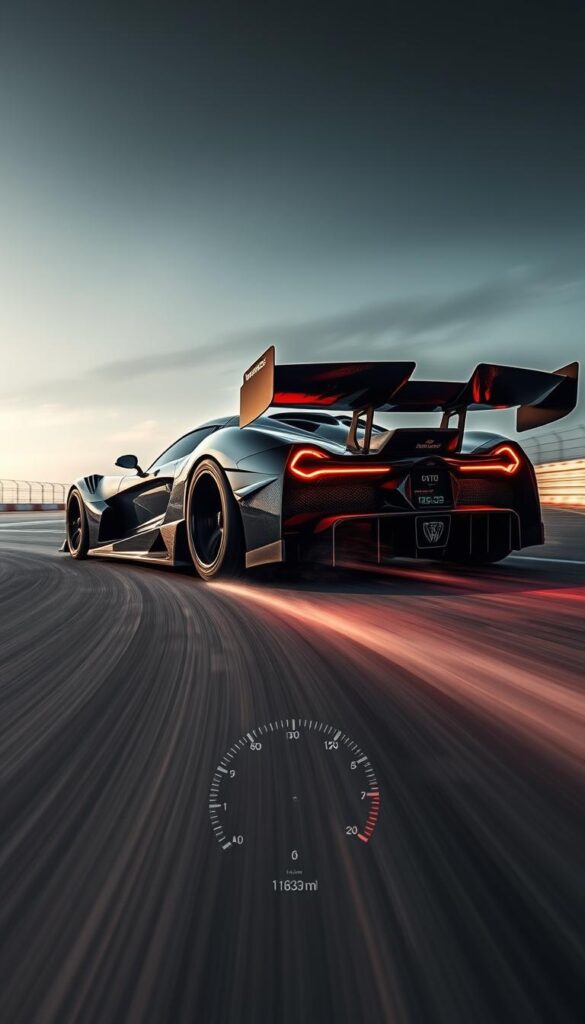
The Hennessey Venom F5’s performance testing showed incredible speed. It tested the limits of car engineering. At the exotic car crash site, it showed amazing acceleration that amazed car experts.
Key performance data captured during the testing highlighted the Venom F5’s incredible potential:
- Acceleration from 0-250 mph in less than 4,000 feet
- Peak speed approaching 311 mph
- Groundbreaking aerodynamic efficiency
Controlling such extreme speeds requires top engineering skills. Special tools tracked every millisecond of the car’s performance. This gave deep insights into its amazing abilities.
“At these velocities, every fraction of a second counts,” said the Hennessey performance lead engineer.
Looking at the performance metrics gave us important info about the car. The testing involved many controlled runs. This ensured accurate data and confirmed the car’s incredible speed.
Measuring the Venom F5’s performance needed advanced techniques. These captured the fine details of its speed and handling. These metrics were key to understanding its top performance.
Safety Features That Saved the Driver’s Life
The Hennessey Venom F5’s safety design was key in a recent high-speed crash. When engineering meets extreme performance, safety features become a lifeline. They help drivers who push the limits of technology.

The Venom F5’s safety rating is high thanks to its protective systems. Advanced engineering turned a potential disaster into a sign of automotive safety strength.
Carbon Fiber Construction: A Protective Shield
Carbon fiber is the Venom F5’s main defense. This material is light but very strong. It offers great crash protection because of its:
- Exceptional energy absorption
- Remarkable structural integrity
- Precise engineered crumple zones
- Minimal weight compromise
Protective Systems Analysis
The Venom F5’s safety features go beyond usual car safety. Its systems work together to protect the driver:
| Safety System | Primary Function | Performance Impact |
|---|---|---|
| Advanced Roll Cage | Structural Reinforcement | Prevents Cabin Deformation |
| Multi-Point Harness | Driver Restraint | Minimizes Potential Injury |
| Impact Absorption Technology | Energy Dissipation | Reduces Collision Force |
These safety features show why the Venom F5 is a top example of hypercar engineering. It protects drivers while offering unmatched performance.
Official Statement from John Hennessey
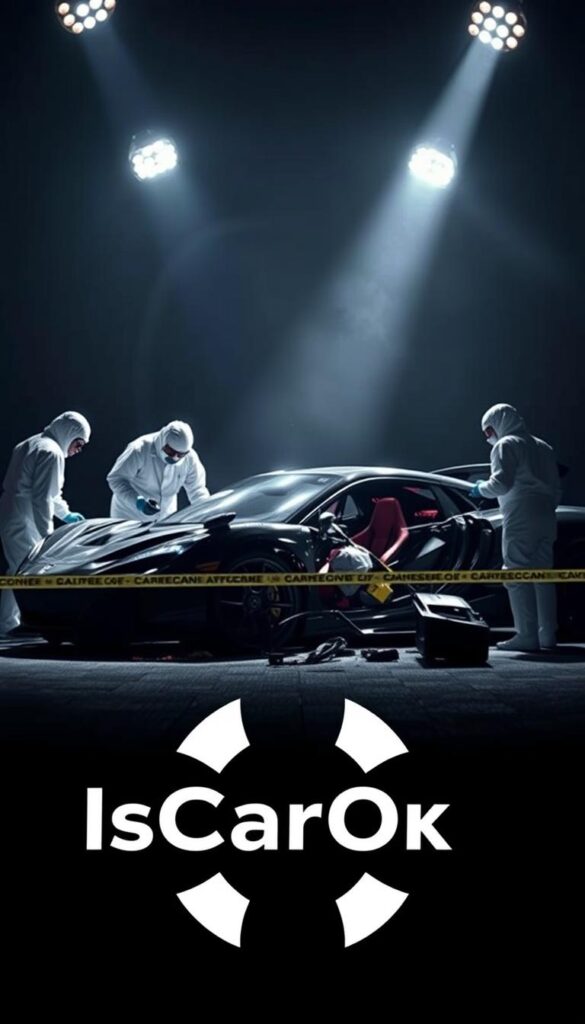
After the Hennessey Venom F5 crash, founder John Hennessey spoke up. He was very open and professional. The crash happened during a test at Kennedy Space Center.
Hennessey’s statement covered a few important points about the crash:
- He thanked the car’s strong design
- He praised the quick help from first responders
- He talked about the safety steps they took during testing
“Our team’s dedication to engineering excellence and safety remains unwavering,” John Hennessey stated.
The crash happened during a test of the car’s extreme speed. It showed Hennessey’s drive to push tech limits safely. Safety is always the top priority for Hennessey Performance.
Even with the crash, Hennessey sees the Venom F5 as a major achievement. Their honest talk about the crash shows their commitment to innovation and sharing with car fans.
Impact on Future Development Plans
The Hennessey engineering review after the supercar crash testing is a big deal for the Venom F5 project. Every problem is a chance to get better. Hennessey’s team is ready to use this moment to improve.
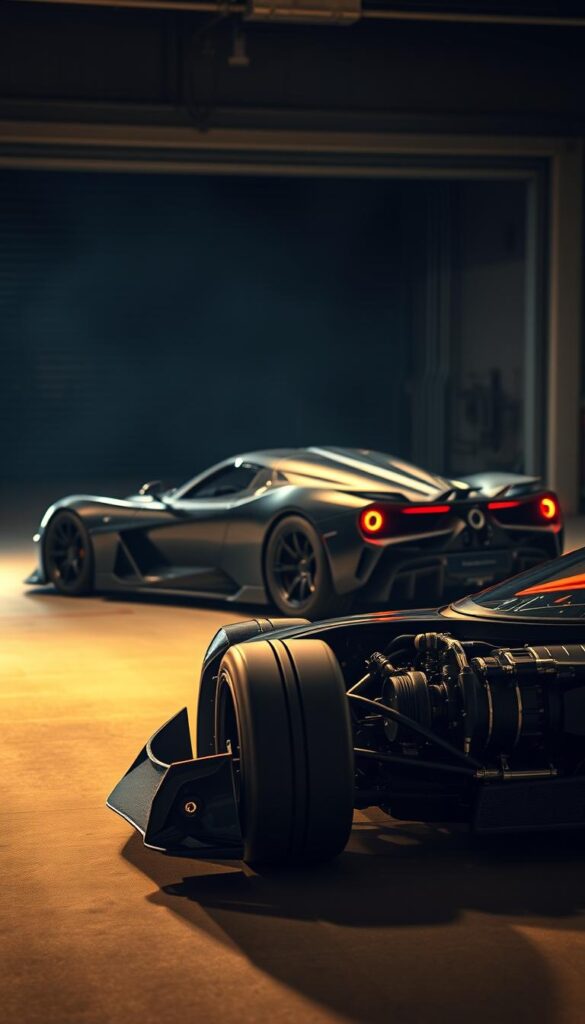
The review will look closely at why the crash happened. It will check every part of the car’s performance. Expect a thorough check that misses nothing.
Engineering Review Priorities
- Detailed aerodynamic data analysis
- Structural integrity assessment
- Performance parameter evaluation
- Safety system diagnostics
Potential Design Modifications
Hennessey’s team will look at several areas for redesign. The crash gave them important insights. These insights could make the Venom F5 safer and better at high speeds.
- Aerodynamic Refinement: Making the car more stable
- Structural Reinforcement: Strengthening the carbon fiber
- Performance Calibration: Improving how it handles at high speeds
The crash shows how tough it is to make hypercars. Knowing about these engineering steps shows how hard companies like Hennessey work to make cars better.
The Venom F5’s Quest for 300+ MPH

The Hennessey Venom F5 is on a mission to break speed records. It’s a luxury supercar that aims to go over 300 mph. Even after a recent crash, the team is still focused on reaching this goal.
Understanding this quest means looking at the technical hurdles. The Venom F5 has a twin-turbo V8 engine that makes 1,817 horsepower. It’s built to do what many think is impossible.
- Target speed: 300+ mph
- Engine power: 1,817 bhp
- Anticipated performance: Potential world record
Despite a recent crash, Hennessey’s team keeps working on their plan. They want to show that the Venom F5 can be the fastest production car ever.
| Speed Milestone | Current Status | Goal |
|---|---|---|
| Current Top Speed | 270 mph | 328 mph |
| Record Attempt Location | NASA Shuttle Landing Facility | Multiple Test Sites |
The world of cars is excited to see Hennessey’s speed chase. What started as a luxury supercar wreck has turned into a chance for innovation.
Analyzing the Loss of Downforce
The Hennessey Venom F5 faced a major aerodynamic issue during a high-speed test. This loss of downforce was a key moment in learning about the limits of extreme car performance.
Downforce is vital for keeping a car stable at very high speeds. In the Hennessey Venom F5 crash, several factors led to aerodynamic instability:
- Rapid speed acceleration beyond 250 mph
- Potential microscopic surface disruptions
- Wind resistance at near-supersonic speeds
- Computational fluid dynamics miscalculations
The exact reasons for downforce failure involve complex interactions. Even tiny changes in surface geometry can greatly affect aerodynamics.
| Aerodynamic Factor | Impact on Stability | Risk Level |
|---|---|---|
| Wing Angle Deviation | Significant Reduction in Downward Pressure | High |
| Surface Roughness | Increased Turbulence | Medium |
| Air Density Variations | Unpredictable Lift Characteristics | Critical |
By understanding these complex dynamics, engineers can make hypercars more stable at incredible speeds. The Hennessey Venom F5 crash site was a key learning point for improving car aerodynamics.
Industry Response and Expert Analysis
The crash of the Venom F5 has sparked a big talk in the car world. Experts are looking closely at the accident to see what it means for safe, fast cars.
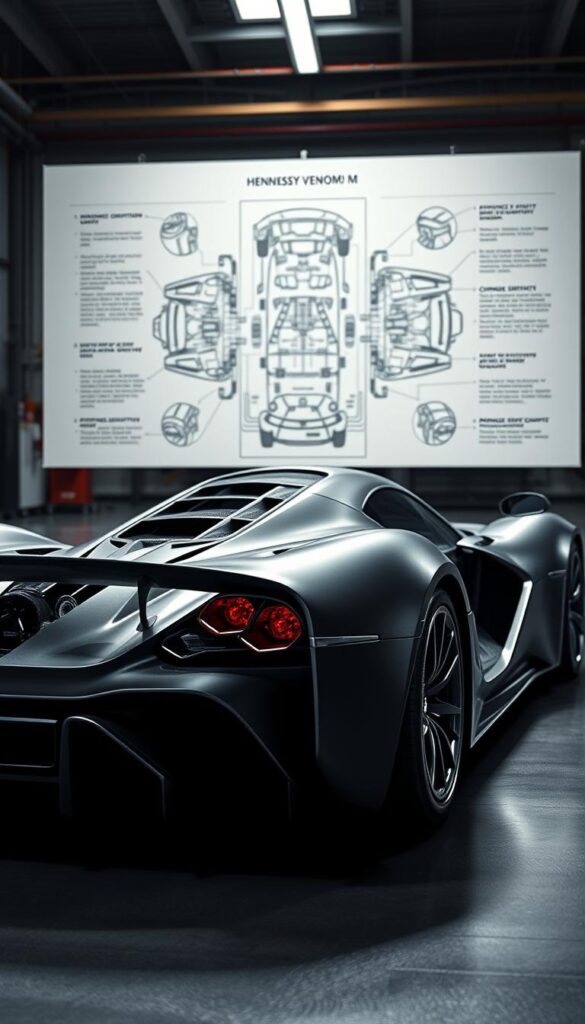
Car engineers are checking the Venom F5’s safety rating and how it’s tested. They’ve found a few key things to look into:
- Aerodynamic stability at extreme speeds
- Structural integrity under high-stress conditions
- Advanced crash protection mechanisms
Technical Expert Perspectives
Top car safety experts are diving deep into the crash. They’re trying to figure out the special problems fast cars face.
| Expert Focus Area | Key Observations |
|---|---|
| Aerodynamic Engineering | Potential design modifications to enhance stability |
| Structural Dynamics | Evaluating carbon fiber protection systems |
| Safety Protocol Review | Recommending enhanced testing guidelines |
Safety Protocol Assessment
The crash has led to a detailed look at safety rules for super-fast cars. Venom F5 safety rating considerations are now a big topic in car engineering.
“We must keep improving our safety methods to keep up with new tech,” says Dr. Sarah Reynolds, a car safety researcher.
Expect big changes in safety rules for hypercars because of this deep dive into the Venom F5 crash.
Lessons Learned from the Incident
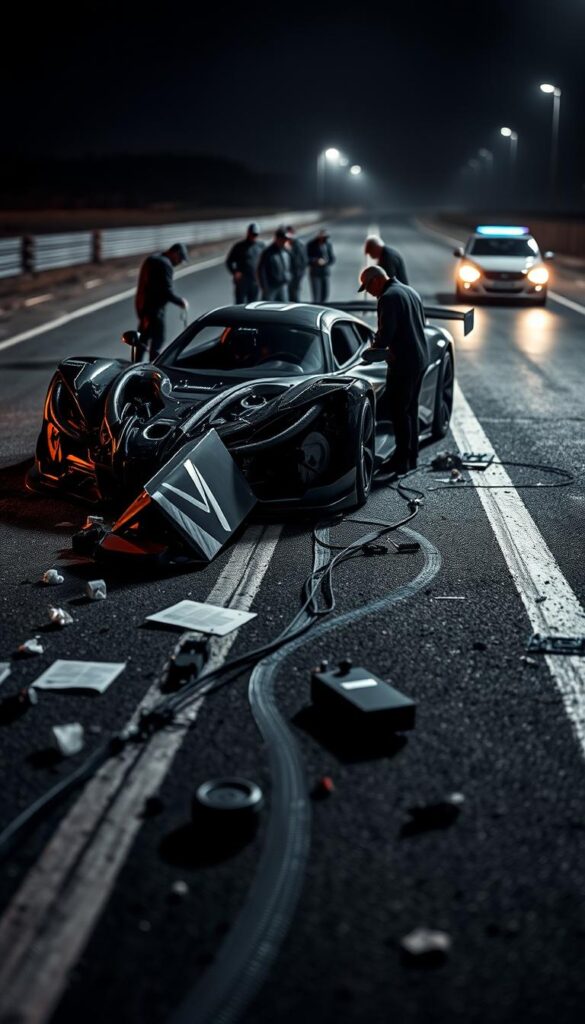
The Hennessey Venom F5 crash has shown us important lessons about supercar safety. It teaches us that car engineers need to balance speed with safety. They must make sure cars are safe while still being fast.
From the Hennessey crash, we’ve learned a few key things:
- Using better simulation tools to guess how cars will act in extreme situations
- Doing more checks before testing to find and fix risks
- Improving how we model a car’s air flow
- Creating better systems to protect drivers
This crash shows us how hard it is to make cars both fast and safe. Car makers need to test their cars in new ways. They should think about how cars might act in unexpected situations.
| Area of Improvement | Recommended Action |
|---|---|
| Aerodynamic Stability | Implement advanced computational fluid dynamics simulations |
| Safety Systems | Develop multi-layered protective mechanisms |
| Performance Testing | Create incremental testing protocols with graduated speed assessments |
Safety must always be the top priority when making fast cars. By learning from this crash, car makers can make safer, faster cars. They can push the limits of technology without risking safety.
Conclusion
The Hennessey Venom F5 crash was a key moment in car safety and engineering. It shows Hennessey’s ongoing effort to improve high-speed car design. This incident was a big deal, but it also shows Hennessey’s dedication to innovation.
This event shows the tough challenges in making cars that can go very fast. The detailed Hennessey engineering review shows the need to balance new tech with safety. It shows how every problem leads to new chances to improve.
This crash will likely shape how future hypercars are made. The car world will study the Venom F5’s crash to make cars safer and stronger. This will help in making the next ultra-fast cars even better.
Hennessey is still working hard to make their cars the best. Their open response to this tough situation shows the value of always learning and improving in car engineering.


